Nobody:
nobody:
the cemetery groundskeeper the morning after jason todds ressurection:

More Posts from Dipstickflopdoodle and Others
Recommended tips for research as a beginner witch/practioner:
Research as a beginner can at times feel stressful if you don't know credibilties or anything about the craft really. So, I'm going to share some tips I use in my practice and would recommend when researching witchcraft.
Research what interests you. If research begins to feel like a task instead of genuine interest or fun, there will be problems down the line with researching thoroughly. That isn't to say don't research things that bore you, it means that you should take what resonates with you and from there you can begin to build the framework for your personal craft.
Does the source align with your moral standing and personal beliefs? If the answer is no, time to find a new source. For example, if a source is fully against any harm towards another person and tries to push that narrative on the reader/viewer (or vice versa) and it's not something you personally align with, find another source. The most important example of this is many authors are bigots, terfs or cultural appropriaters. Remember to research the author and their practice before trusting what they have to say.
What may work for some people will not work for you. Do not feel inclined to do everything a certain way as said by a certain practioner. The point of witchcraft is to develop your own habits and outlooks. Crystals and astrology may work best for someone, but you may have an inclination towards herbs and palmistry for example. You do not need to practice every form of witchcraft out there. So circling back to the first point, pay mind to what sparks joy and what aligns with your abilities.
Take everything with a grain of salt. Learn to question what you learn. As witchcraft and spirituality have been practiced in many cultures for many years, things have evolved and been taken from one context to the next. Research various practices and rituals as well as the authors and cultures who promoted said practices
Use multiple sources. Blindly believing one post can be harmful, especially when concerning topics that can be a manner of physical safety (fire hazards, dressing candles, consumption and burning of herbs) or spiritual safety (spirit work, baneful work, trickster spirits). The more research the better, as it solidifies understanding too.
Do not rely solely on social media, but use it as a crutch to what you already know. Many content creators care more about views or aesthetics than educating. But many creators also DO care about what they're putting out there and have genuinely good tips and tricks for various practices. Just be wary.
Don't worry about aesthetics or perfection when you're just learning. Don't let pinterest photos of altars downplay your own craft and beauty. Right now, you're learning new topics and there's plenty of time later to find pretty altar tools or to neatly scribe in a leather journal. Don't let it distract you from research, and ultimately, the goal is to grow.
Have fun with it! There are so many research topics, and it can be as expansive or specific as you make it. Remember this isn't supposed to be stressful, it's supposed to be rewarding.
(Please add your own tips too if you'd like!)
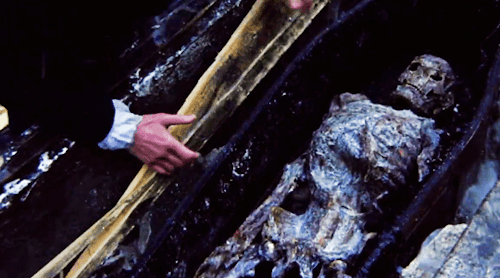
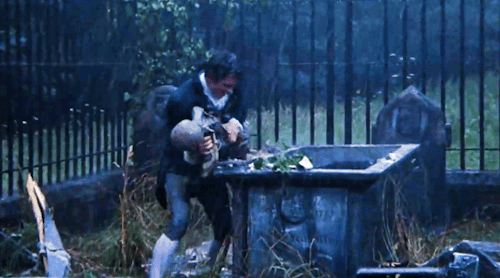
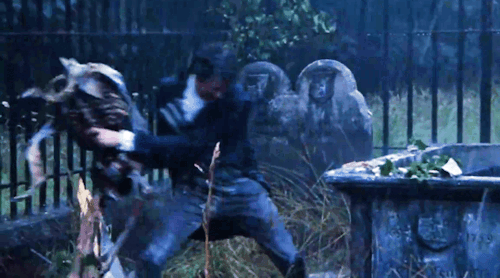
And Now the Screaming Starts! (1973) dir. Roy Ward Baker

Trying to draw buildings

Writing Romance: Courting
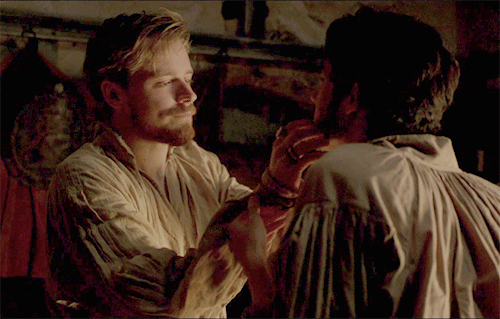
Prior to the 20th century, most couples engaged in courting politics to find their partners, and there were a lot of rules about how to properly court your intended partner. So I figured I’d put out a guide to proper romancing etiquette for those setting their stories in more antiquated settings. But a lot of these courtship practices don’t work as well for same-sex relationships. So, I’ll go through some of the rules for courtship that apply to any story that wants to use courting romances, then I’ll explore ways this could work for a queer couple.

Gender Dynamics in Queer Courtships
Gender is a HUGE aspect of courtship, as the expectations of men and women were starkly different. This leaves queer couples with two choices: either conform to the gender roles, or make the roles more generalized that both parties are expected to uphold. Whichever route you take, be consistent. Not just with queer couples but heterosexual ones as well. If a lesbian barmaid can chase skirts, why can’t a heterosexual seamstress chase chaps?
If you choose to lean into gender roles and active vs passive roles in courtship, I believe it is best to leave it that the one of higher social status takes on the role of the female, as it would be uncouth for a Duke to be chasing lowly Viscounts. Those looking for a higher status husband should be the one working to win the Duke’s affections. While one could argue that the one of higher status should be the active pursuer, the thought of a queen chasing skirts simply fails to capture the regal dignity of the position when we think on it. It seems more in line with the properness and decorum of the era to have the elite have the suitors come to them.
Even if you do away with the gender roles in favor of gender equality in relationships, social status and rank would still be enough to impact the active vs passive roles. A prince looking for a spouse will always be more passive, while his knights, dukes, and counts vie for his affections. Meanwhile, a lowly Baron will almost always be in pursuit of a match. This follows the Order of Precedence, a real life rule of etiquette that states that those of lower status are the ones introduced to someone of higher status. So before a Baron can speak freely with a Prince, someone must introduce the Baron to the Prince and never the other way around. If the Baron is being introduced to a group, they will be introduced in ascending order of rank. The Baron will first be introduced to the Count, then the Duke, and then the Prince. This is why in many court scenes, someone will introduce a character to the king before they speak to one another.
But what if they’re of equal status? What happens when a prince is seeking another prince to be his husband? While they have equal titles, a prince of a tiny, less powerful kingdom is more likely be the pursuer to the prince of a bigger, wealthier kingdom. It’s also unlikely for a prince who is 1st in line to inherit his throne would marry a prince who is also the heir apparent to his own kingdom, unless they were looking to combine their countries into a new alliance. Otherwise, a first born prince is more likely to be chased by a second born prince who won’t inherit his kingdom. Likewise, in a relationship between two Dukes, the one who is higher in the line of succession to the crown would be the one to be pursued by the one lower down the line of succession. TL;DR: Whoever has the bigger house is the one getting pursued by suitors. However, do keep in mind that admittance to the royal palace is strictly by invitation only, so that does make things tricky. But visiting royalty often do have an open invitation to the royal palace. So while a Duke courting a prince would need an invitation to call on the prince for his hand in marriage, the Prince of Belgium would likely be just down the hall from the Prince of France’s quarters, giving him much easier access to court the Prince du Sang of France.

Presenting at Court
When a young gentleman or lady had come of courting and marrying age, their parents would petition to have them present at court, though people could also be recommended by other nobility. This was an effective way for some to social climb, being recommended by someone of much higher status and impeccable reputation can skyrocket their child into an advantageous position. These events would be held at the palace multiple times per year, and were invite only. The Lord Chamberlain was in charge of going over the guest list with the utmost scrutiny, and nobody would be permitted who did not have a pristine and stainless record.
Men of good social standing would present at court at formal events called Levées. They would present before the King or Prince. In the event that there were two queens or otherwise no living males of the royal family, they might present before the highest ranking male in the line of succession, or otherwise just present before the Queen. In the Victorian Era, men wore buckled shoes and swords to both a Levée and a Presentation. They had to wear either court dress or a uniform. So, if he was a soldier, he might present at court wearing his finest military dress uniform.
Presenting at court for girls were much less imaginative, only being called a Presentation. They were expected to drag long trains behind them, to bow and address the queen flawlessly, and then leave the room without fumbling over her dress or shoes. Like with the Levées for the gentlemen, these events would be held multiple times per year, and multiple girls would present on the same day, meaning that all of the girls would be compared. The better she performs, the more desirable she will be. Some men might be charmed by a little clumsiness, but it was generally seen as extremely important for a girl to make a great first impression on the court as a lady of courting and marrying age. This is also why the presentation itself is rather short. There’s a lot of girls to get through, and the queen’s a busy lady.
Someone who was already of marrying age but marries into higher status would be expected to present at court after the wedding. As a king and queen had the power to bestow titles on people at their leisure, it was not impossible for an older married woman to be made a high enough status to make her formal debut at court, and older women had different expectations when making their debut, such as styling themselves differently, and wearing different colors. Thus if, for example, a lowly washer woman saved a nobleman’s son from drowning, she might be rewarded by being recommended for a title like Lady or Baroness and being allowed to present at court. Regardless of age, the presentation mostly serves as an introduction of a new face at court to the rest of high society.

The Rules for Men
Men were encouraged not to flirt with everyone they found attractive, as being too friendly might earn them a reputation that hurts their social image. Guidelines to courtship from the Victorian Era makes it clear to young men that not every girl will be interested in his pursuit of her, and that he should take a lack of positive response to any advances as his cue to move on, lest he embarrass himself or his family.
Never allow a woman to be uncertain of your feelings and intentions. Women were permitted some leeway with acting coy, but for a man to toy with a woman’s affections was seen as improper. Once a man is aware a woman mistakes his attention for affection, he is to quickly, yet politely, lay bare his true feelings. In a similar vein, a man should never make any declaration in jest, whether expressing love or proposing marriage, any attempt to make such grand declarations as a jest does grave disservice to the woman, and will earn him great dissent and contempt from those of good breeding and high social standing. This second rule also extends to the fairer sex, and is just universally sound advice when navigating romantic entanglements.
A man must put out his cigar in the company of women, which also meant that if a woman approaches him to engage him in conversation, he must discard it, regardless of how expensive it was.
When greeting a woman in public, a man should tip his cap in a polite manner, though if she stops to talk to him, she will extend her hand to him. In this case, he must remove his hat with the hand farthest from her, and take her extended hand with the one closest to her. If they are well acquainted, he might bestow the back of her hand with a quick kiss before letting go of her hand. He would then be expected to walk with her as they converse. If he has somewhere to be or the conversation has reached a natural ending, he should politely excuse himself, and wait for her to say her farewells before he leaves her company. If he simply cannot stop to talk, he should make his urgency clear, and apologize before carrying on, still being sure to tip his hat in a show of politeness.

The Rules for Women
Accepting gifts from a suitor is dangerous. If a suitor brings you a gift and you accept it, it indicates that you are interested in their advances. Being too accepting can also cause a man to continue to shower you with gifts, which could be seen as greedy. If disinterested in the suitor, it is advised to decline his gift. However, it’s best to try and decline his gift in a courteous manner, as a calous decline will earn you a reputation for a foul temperament, which may discourage other suitors.
An unmarried woman should never be outside alone. She should always be in the company of a companion, chaperone, parent, or legal guardian. This is a means of protecting women from being set upon by unscrupulous men.
Even while courting one another, an unmarried woman should never be alone in the company of a man outside of her immediate family. This usually meant that any sort of date the pair might go on will always be supervised from afar by a parent or chaperone, such as a lady-in-waiting or a governess. The young couple would usually be left some leeway to conversate privately, so long as they were within clear eyesight of the woman’s caretakers, and close enough for them to step in should the man act dishonorably toward her.
A man will come to call upon a woman he is interested in pursuing, meaning that he will come to her house in order to pitch woo or charm her. This is to ensure she is in the safety and protection of her family, so as to prevent her from being done ill by the man where her family cannot protect her. As such, a woman would never call upon a man or go to his residence. In a queer relationship, this is simply swapped to the one of lower status coming to the house of the one of higher status. Although, due to the role of status, the suitor will require an invitation (either specific or open) to come a-courting on the object of their affections.
Women would often have a dance card which indicated who she intended to dance with at an upcoming ball. She’d save a dance for the host, and likely also her suitor. Any special guest of the ball would likely also be afforded a dance. If she has multiple suitors, she would be expected to dance with all of them, and not to spend her entire evening doting on only one of them. It was also seen as improper for her to dance too often with the same partner, regardless of whether she was looking for a spouse or not. If she was the guest of honor, it might be expected for her to share more than one dance with the host, possibly sharing the first and/or last dance with him to start or close out the night. Sometimes at dances, the guests would know the music selection and dances ahead of time, and women would have the music or dances on their dance cards. While I don’t know if it was done historically, I don’t think it would be too unorthodox for a man to write a woman ahead of a ball (assuming he’s familiar enough for such audacity) and request that she save a specific kind of dance for him. If his Waltz is shabby, but he does a marvelous Minuet, he’d want to be sure his dance with a possible match would be a dance he’s more proficient with. A lady might fill up her entire dance card ahead of time, but she’d more often than not leave a spot or two open to allow for more spontaneity. As dance cards were only used by women, I don’t know if they’d be used by gay men in courtship or not. Queer people at a ball however might wear something to indicate their preference in dance partner. A visual cue to let the gentlemen know that the Baroness of Arendale doesn’t have much interest in dancing with men.

Courting in Public
Courtship, especially among the upper class, was predominantly undergone during the Social Season, which in the UK ran from March until September, and included a wide variety of events and activities including balls, picnics, dinner parties, and sporting events. During the social season, every personage of noble blood would gather in a central location, usually the capital. These were not the only times during the year when people courted, it was more akin to a feeding frenzy for eligible bachelors, largely due to all of their marital options being assembled for the season, making it much easier to find someone to his liking.
It was wildly scandalous to show public displays of affection. That was to be reserved for private life. As such, suitors would instead exchange gifts, photographs or locks of hair instead of kissing or holding hands. For a queer relationship, it might be allowable for suitors to give one another their clothing, jewelry, weapons, or armor, either in their entirety or a particular piece of it. However the intimacy of sharing garments would likely be reserved for couples that have been courting for some time, and would be ill-advised as a first gift to one’s admirer.
At a ball or other such party, if someone catches your fancy but you’ve never met them before, it is impolite to speak to them until the host or hostess has formally introduced you to one another. Even if you dance with them, it is ill-mannered to speak to them during and after the dance if neither of you have been introduced to one another.
If someone insults your suitor, a gentleman should be ready to act the part of a knight and defend his lover’s honor. If his partner initiated the conflict, it is advised for a gentleman to apologize on their behalf, though not so meekly as to offend their lover or besmirch their honor. If another man is looking to start a quarrel, a gentleman should not return his hostilities, as a foul temper and lack of self-control is an indication of ill manners and poor breeding, bringing you down to the other man’s level.
A gentleman should always carry his lady’s luggage, and on the sidewalk, takes the side closest to the street to keep his lady’s dress from being splashed with mud or water, or to keep her safe should a wayward horse, carriage, or car veer off the street, it is more likely to strike him than her.
A couple talking in public must speak succinctly, poignantly, and softly. Long drawn-out conversations were best for private, whereas in public, it was unwise to spend one’s entire evening conversing with a single person, unless it is well-known the severity of their entanglement. It was considered ill-manner to speak excessively or too loudly as to disturb others.

Matchmaking and Gold-Digging
Due to eldest sons getting the entire inheritance of his father, women seeking to court would seek out eldest sons who would be coming into their family fortune, while sons left out of the inheritance would be more willing to marry below their station in pursuit of rich heiresses whose wealth would keep them in the lifestyle to which they have grown accustomed. Likewise in a queer relationship, wealth and power would likely effect the interests of relationships, and differences in inheritance laws might also change the power dynamics in courtships. If a daughter can inherit the full control of her father’s mercantile empire, she’s going to be fighting off second-born suitors with a stick, regardless of gender.
I mentioned above the Levées and Presentations that young nobles would go through when entering the public sphere of the court. Parents of other noble families would often be in attendance of these parties, and if a presenter impressed them, they may approach the parents and suggest a courtship between their children. This is less of an arranged marriage, and more the parents steering their children to give each other a chance. It’s much closer to playing matchmaker than paying 5 cows and a corn mill for someone’s daughter. The children could still decline the courtship out of lack of interest or an absence of chemistry, so long as they settled things politely.

Watch Bridgerton
While Bridgerton is by no means a perfect replica of historical courtship, as its Diamond of the Fresh Water is largely a creation of the show, things such as the calling of suitors, the responsibility of first-borns compared to second-born and third-born sons, marital entrapment, and elevating one’s status is very well executed. If you want to write period romance, Bridgerton is an excellent resource to take inspiration from. It’s a great way to see these mechanics in action and hopefully watching it will spark something in your own imagination.

While that was a lot of information, I do hope it is something you found helpful. Most of the rules are much harsher on upper class characters, but most people who write historical romances are more interested in the romance between the countess and the duke, rather than the washer woman and the fisherman. I will also admit this is not a flawless breakdown, as I could have easily missed something. Still, as someone who loves period dramas and historical costume, I couldn’t leave such a tantalizing topic untouched.

▪︎ Hamlet.
Artist: Alphonse Mucha (Moravia, Ivančice, active France, 1860-1939)
Date: 1899
Medium: Lithograph in four colors: red, blue, pale yellow, and olive green; on two sheets.
I was talking with my housemate about how to be more physically active if you’re not used to it at all because everywhere you’re told to start a training routine where you push yourself a little every day, and while that may seem easy for some people it can be really fucking daunting if you start from zero.
As someone who comes from a very physically active family that doesn’t exercise just for the sake of exercising but do things like walk to the grocery store and bike to work, here’s my advice that has always worked for me:
Go super duper easy on yourself.
If you want to walk more start by walking for 3 or 5 minutes. The shortest possible walk you feel you’re capable of. A trip around the block or across the yard. You don’t need to sweat or get your blood pumping. Just a short stroll. The hardest part is to convince yourself to set aside 5 minutes every day to go on this short walk but nothing else about it should be hard. Do it every day and one day you’ll realize that you don’t want to go home just yet. It’s very important that you don’t think “I want to pressure myself to walk further” but rather “I haven’t spent all my walking energy yet. I have more walk in me” and only then do you lengthen the walk. I repeat, at no point should it be exhausting or difficult because even when it feels easy your body will be building muscle and stamina and it will eventually feel too easy and you’ll naturally want to crank it back up to easy again.
If you’re not used to being physically active it might not make a ton of sense when I say that you’ll have more walking energy left but trust me, you’ll get it when you get there.
I grew up with going on evening walks with my parents and passed that on to other housemates who didn’t get it at first but are now going on walks long after they moved somewhere else. Because once you get the hang of it you’ll realize how calming it is on the brain to move the body even if the body isn’t exhausted afterwards.
And it of course helps to entertain yourself especially in the beginning. My housemate started out listening to audiobooks and podcasts but eventually realized Pokémon Go was the best motivator. Whatever you feel like you want to do on your 5 minute easy stroll.

Hunger Games OC from district five.





My father was right. I’d waited here to kill him. But my father was also wrong. About pretty much everything else.
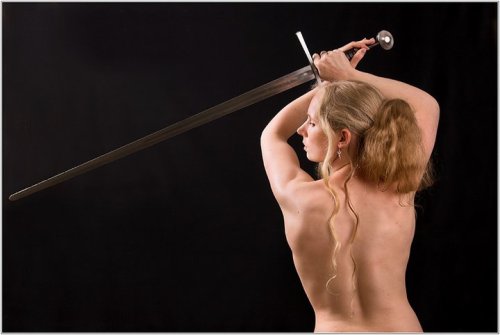
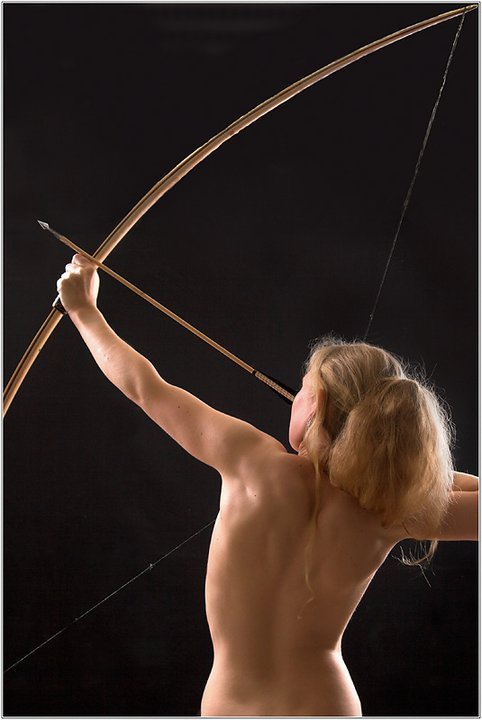
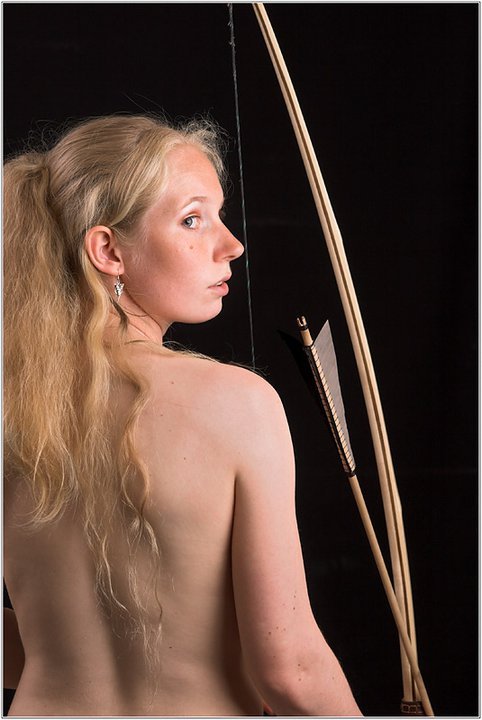
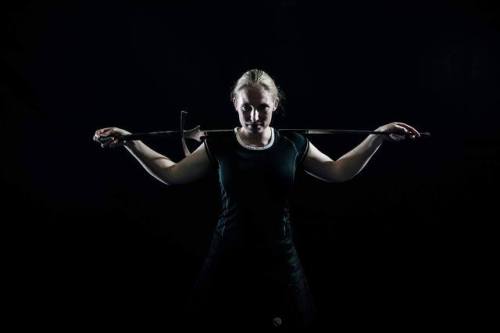
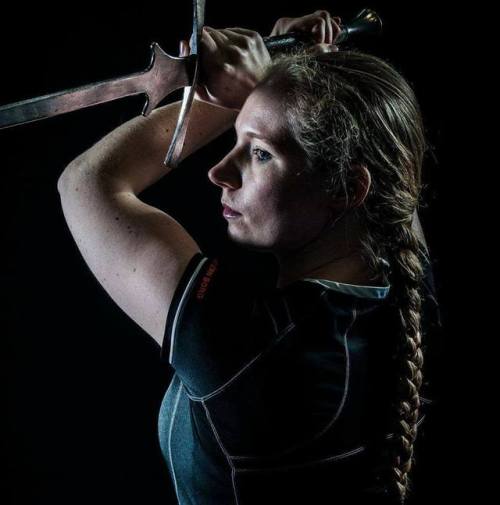

Dutch longsword fencer Tosca Beuming
Photographed by Martin Philippo and Andress Kools
-
 atnab liked this · 4 months ago
atnab liked this · 4 months ago -
 nickelbelltower reblogged this · 5 months ago
nickelbelltower reblogged this · 5 months ago -
 nickelbelltower liked this · 5 months ago
nickelbelltower liked this · 5 months ago -
 parri-sun liked this · 7 months ago
parri-sun liked this · 7 months ago -
 bookwormkimuchimarina liked this · 9 months ago
bookwormkimuchimarina liked this · 9 months ago -
 notgonnapost4 reblogged this · 9 months ago
notgonnapost4 reblogged this · 9 months ago -
 yi-kers liked this · 11 months ago
yi-kers liked this · 11 months ago -
 ngontolinhidup liked this · 1 year ago
ngontolinhidup liked this · 1 year ago -
 alfredda-butt-ler liked this · 1 year ago
alfredda-butt-ler liked this · 1 year ago -
 0pixel0pop0 liked this · 1 year ago
0pixel0pop0 liked this · 1 year ago -
 ghostlights liked this · 1 year ago
ghostlights liked this · 1 year ago -
 kitten1060 liked this · 1 year ago
kitten1060 liked this · 1 year ago -
 notgonnapost4 reblogged this · 1 year ago
notgonnapost4 reblogged this · 1 year ago -
 notgonnapost4 liked this · 1 year ago
notgonnapost4 liked this · 1 year ago -
 bookwyvernwolf liked this · 1 year ago
bookwyvernwolf liked this · 1 year ago -
 awsome-space-dragon liked this · 1 year ago
awsome-space-dragon liked this · 1 year ago -
 maryalice098 reblogged this · 1 year ago
maryalice098 reblogged this · 1 year ago -
 starlightnotthehero liked this · 1 year ago
starlightnotthehero liked this · 1 year ago -
 fantasticgoateenightmare liked this · 1 year ago
fantasticgoateenightmare liked this · 1 year ago -
 spokeofthedevil liked this · 1 year ago
spokeofthedevil liked this · 1 year ago -
 tm4dcu reblogged this · 1 year ago
tm4dcu reblogged this · 1 year ago -
 deepestmooncrusade liked this · 1 year ago
deepestmooncrusade liked this · 1 year ago -
 razzjamjar liked this · 1 year ago
razzjamjar liked this · 1 year ago -
 i-currently-have-purple-have-sir reblogged this · 1 year ago
i-currently-have-purple-have-sir reblogged this · 1 year ago -
 i-currently-have-purple-have-sir liked this · 1 year ago
i-currently-have-purple-have-sir liked this · 1 year ago -
 arcturusartss reblogged this · 1 year ago
arcturusartss reblogged this · 1 year ago -
 arcturusartss liked this · 1 year ago
arcturusartss liked this · 1 year ago -
 wickerboxgismo liked this · 1 year ago
wickerboxgismo liked this · 1 year ago -
 katiebehappy reblogged this · 1 year ago
katiebehappy reblogged this · 1 year ago -
 17lions reblogged this · 1 year ago
17lions reblogged this · 1 year ago -
 17lions liked this · 1 year ago
17lions liked this · 1 year ago -
 noirpunkvamp reblogged this · 1 year ago
noirpunkvamp reblogged this · 1 year ago -
 noirpunkvamp liked this · 1 year ago
noirpunkvamp liked this · 1 year ago -
 akabiro liked this · 1 year ago
akabiro liked this · 1 year ago -
 joyfulfishprunealmond liked this · 1 year ago
joyfulfishprunealmond liked this · 1 year ago -
 thequeenoffuckoffimsleeping liked this · 1 year ago
thequeenoffuckoffimsleeping liked this · 1 year ago -
 thinkinpoink reblogged this · 1 year ago
thinkinpoink reblogged this · 1 year ago -
 itsybitsybatsyspider liked this · 1 year ago
itsybitsybatsyspider liked this · 1 year ago -
 the-ace-reader liked this · 1 year ago
the-ace-reader liked this · 1 year ago -
 xovera-toz liked this · 1 year ago
xovera-toz liked this · 1 year ago -
 talysalankil liked this · 1 year ago
talysalankil liked this · 1 year ago -
 nutella-icecream reblogged this · 1 year ago
nutella-icecream reblogged this · 1 year ago -
 multiple-fandoms1963 liked this · 1 year ago
multiple-fandoms1963 liked this · 1 year ago -
 lunarlegend11 reblogged this · 1 year ago
lunarlegend11 reblogged this · 1 year ago -
 wizardglam liked this · 1 year ago
wizardglam liked this · 1 year ago -
 marvel-ous-posts liked this · 1 year ago
marvel-ous-posts liked this · 1 year ago -
 uponawonder reblogged this · 1 year ago
uponawonder reblogged this · 1 year ago
